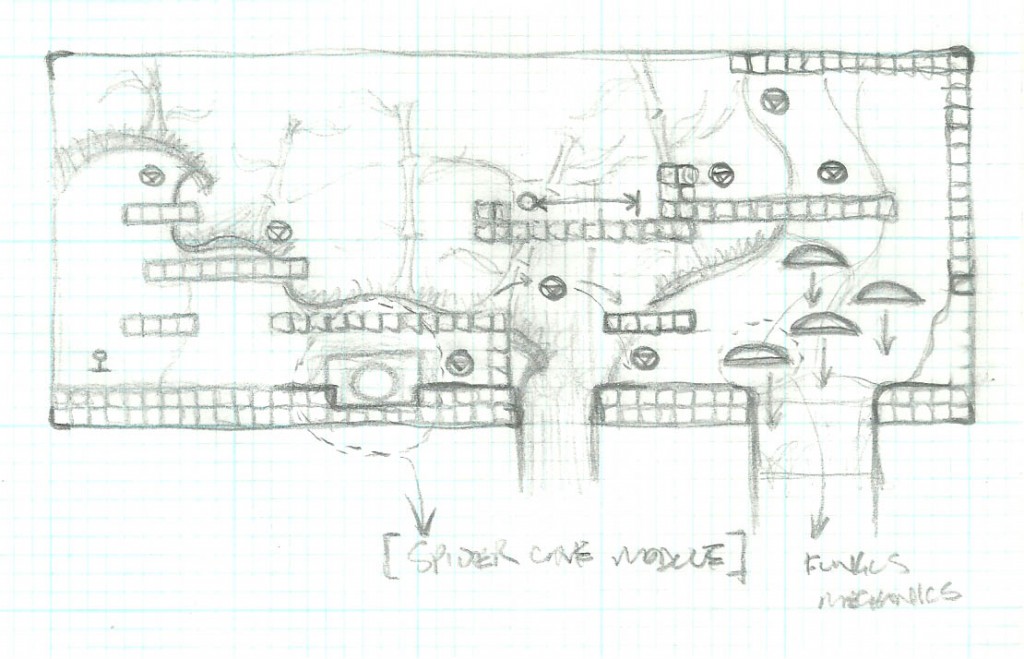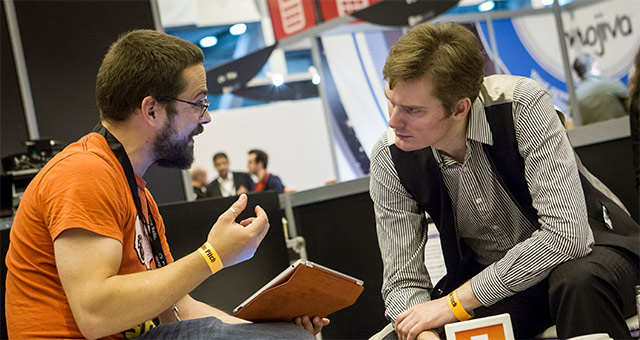It’s a pretty interesting time for the indie game industry. In just over 5 years we have seen a massive shift towards mobile content delivery, and with it a whole new generation of gamers – many of which had no prior experience with games.
In the early days before the market had peaked, you could find fame and riches as a developer just by uploading your game to iTunes, little to no marketing or launch strategy required. Doodle Jump is a good case study, as it is a relatively simple and uninspiring game by today’s standards, yet it was part of that early group of games which managed to stand out in a relatively unsaturated app store by offering a little something different.
So what if Doodle Jump came out in 2015? Would it dazzle, would it awe, would it even rank? Probably not. Accelerometer control and vertical jumping games are old hat. Yet even now, countless Doodle Jump clones are still being released every day.
Marketing budgets and advertising aside, If you want to stand out as an indie game developer and build fame and glory the old school way, your game ideas generally need to not suck.
Before you can determine if your game idea sucks, you should ask yourself these questions
1) Is my game idea a blatant clone of an existing game?
2) Can I name or find at least 5 games like mine on the app store?
If you answered yes to either of those, it doesn’t mean that your game idea sucks, but it does mean you should re-think your motives for making games. Sure it’s all about money in the end, but it’s the journey that makes the difference to most – and in many cases determines if indeed your game does stink.
Note* Just because a game makes money, doesn’t mean it doesn’t suck. If you over-monetize your game, flooding it with pop-up ads that trick users into clicks – sure you might make a buck or two, but your game sucks… and so do you!
Looking back over the past few years there have been some stand out indie games which were both original and creative in their own special ways.
Ridiculous Fishing, Don’t Starve, Rogue legacy, Temple Run to name a few.
Why did they win?
The ideas behind these games, though not completely original in the history of gaming (very little isn’t based on an older game), have their own unique characteristics, whether it’s the art style, control system, progression or core game-play. They re-invented a genre and made it their own.
It’s essential to separate yourself from the rest of the market in some way. You see gamers are getting bored, every third or so game released is a clone of another. You need a talking point and you don’t want it to be ‘my game is like this other game’.
Nobody can teach you good ideas. However you can be taught how to research them and how to come to the best conclusions. But to look at an idea and know for certain if it is worth pursuing is… difficult. It is for this reason large companies pay million dollar salaries to CEO’s which have the ability to differentiate between the good, the bad and the ugly, and even they often get it wrong.
There is a point that is important to consider. It is easier to to identify a good idea than to recognize a bad one – especially if they are your own. Most indie game developers have frequent atomic brain explosions as a new idea floods their cerebral cortex – the ‘Golden idea’. It’s the greatest, perhaps the BEST idea EVER. Several months and a few boxes of Coca Cola later, one of two scenarios often unfolds.
1) They have a moment of reflection, suddenly realising their idea has lost it’s appeal, the passion is just no longer there.. Maybe the idea was never that good.. The project is abandoned.
2) They spend months making the game, drop it on the app stores, only to discover nobody really cares. Soon after it is buried under the waves of new releases, never to be seen again.
Most of us have been in one or both of these situations (some more than once!). Both scenarios lead to a failure of sorts, yet through failure we get stronger, but often poorer 🙁
So heed my words and try to learn from mine and other’s mistakes. Learn to recognize when an idea is balls.
Easier said than done right?
Here are some things you can do to help you discover if your game idea is in fact good or bad:
Be clear about your concept
Write it out on paper, explaining how different parts of the game work. Sleep on it and review your notes. Does it still sound as exciting? Do you feel the passion?

Mock it up visually on paper
Sketching out your idea is essential in getting a good overview of the concept. You don’t need to be an artist, just keep it rough. If you are still excited about the idea, you may consider mocking it up in Photoshop with some cheat/place holder graphics from Google (unless you’re a sweet artist).

Review your mockups on the correct device
Design your images to the correct size for the platform they are designed for. For example, if they are for iPad, do your mock at 1024 x 768 pixels. Open your mock up as a photo on the iPad to get a good sense of the scale to see if it works and test how players will feel interacting with it (often I have found that a seemingly good idea just didn’t translate well to small screens, however now with higher resolutions screens, things are looking more promising).
Show some people your concept
If things still feel on track, it is a good time to show your concepts to some friends or family. Consider showing ‘non-game developer’ friends if possible. It’s just easier in the early stages to show people with as little bias as possible. Explain to people how the game will play. Don’t force or influence them to like it, rather tell them “I want your honest feedback so I can make this idea better”, and treat it as exactly that.
Review feedback and make a decision
Feedback is always a mixed bag and can be difficult to accept, but constructive feedback is always good at improving ideas. At this point, if everyone has told you your game idea stinks, and has few redeeming or ‘fun’ qualities – consider putting it on the back burner and look at what’s next on your list. It happens, don’t take it to heart, you can always revisit the idea in the future. With that said, many great games are misunderstood in their early stages, so make sure you are communicating your concept clearly!
Prototype
Prototyping is the next key step and identifying a viable concept. Give yourself a short timeline to create a basic working example of the core mechanic. This may not always be possible depending on the type of game. But see how you go, I would be cautious about prototyping an entire RPG system if your time poor. Your prototype is perhaps the best indicator of the potential success your game could have and if indeed it is good. It is a tool you can take to game meet-ups and game jams to get more valuable feedback.
Having people play-test your prototype is an invaluable source of information. As mentioned earlier, try no to influence players, rather observe and take notes on their user behavior.
Following solid idea recognition steps is a powerful tool to help you narrow in on the more memorable ideas while filtering out the bad ones. This process should give you the best foundation and chance for a successful game.
Keep it Real, Keep it Indie









5 Comments
Hi John.
Really good article, it truly made me think about my own process of developing games vs how they should be made. Clearly, I have done a lot of things wrong and this is a good read in that regard. That being said, I am going to take these advices and use them in my future game projects.
Thanks for the article!
– @maunovaha
Thanks for your kind words Mauno, I wish you all the best for your next project!
Its very good article.I agree but not about originality.I have seen many Good games doing very bad. It isn’t because people do not like it. People didn’t even reach to it.People can decide if they at least come to know about the game. We can say they lag marketing strategies or budget or something but fact that many game review sites did not review them. not even companies like Google.
I wonder Google has promoted clones Just to get trends on store.Sorry if sounds rough but being original may not be the only thing. I mean at least I think so. Personally I will go for originality than clones but not sure about its success.
There is definitely no silver bullet solution, but originality is certainly one of the components in setting one’s self apart and getting some attention, especially with review sites. That doesn’t mean to say that a game must be 100% original, but there should be some element of creative originality. Some examples can be found in ‘Papers Please’ and ‘Don’t Starve’ to name a couple.
Thanks for this info!